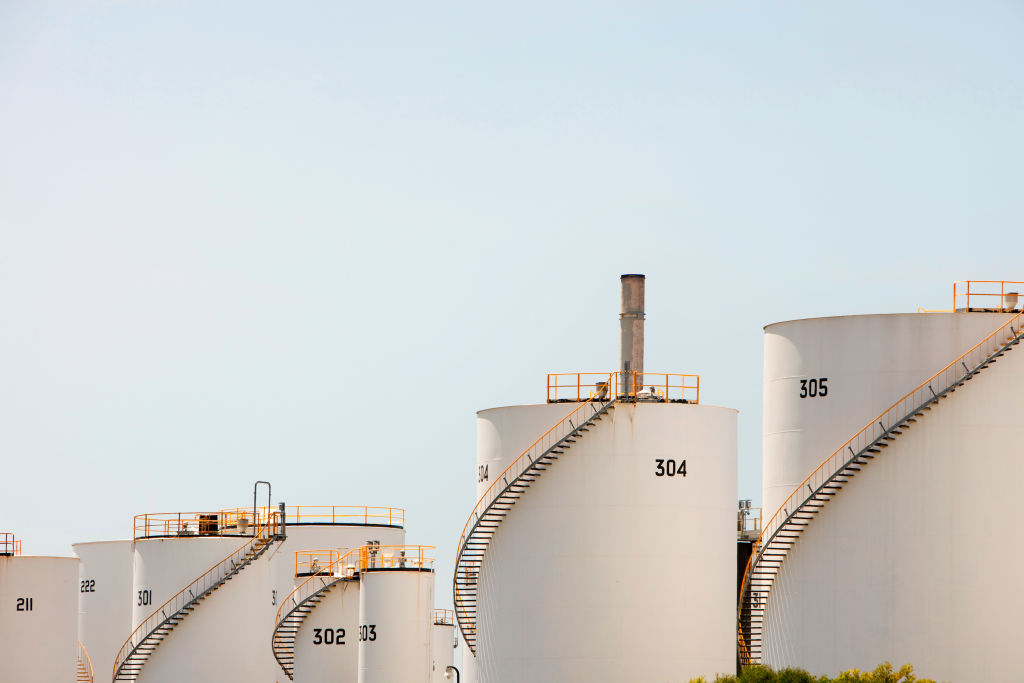Australia’s fuel reserves don’t have to keep running on empty
Posted By Ben Stevens and John Coyne on October 11, 2022 @ 06:00

For decades, Australians’ faith in globalisation and economic liberalism ensured that discussions about resilience focussed on recovery from short-term disasters. But the impacts of Covid-19 and the exponential decline in global security in recent years have signalled that this faith may have been misplaced. Australia’s supply chains continue to be tested—and to challenge policymakers.
Our precarious liquid fuel arrangements are a case in point.
Liquid fuel currently meets [1] more than half of the nation’s energy needs. Australia imports [2] around 90% of its refined fuel. Despite this, its only two fuel refineries are under pressure to shut down due to the market’s preference for just-in-time supply chains.
Buying at the last minute can offer savings, but Covid has shown how vulnerable that practice is to disruptions. In the current geostrategic environment, vulnerability is dramatically increased. Australia is heavily reliant on refined fuel and the crude oil required for refining it transiting through an increasingly contested South China Sea.
Australia’s lack of onshore fuel storage is a major weakness. As an International Energy Agency member since 1979 [3], Australia should hold at least 90 days of net oil imports. Australia has been unable to match this commitment since 2012 due to a decline in its refining capacity and an over-reliance on just-in-time imports. As of June, Australia had 58 days of net import coverage [4], or 72 days in total, if the government added oil aboard vessels bound for Australia (a measure the IEA does not accept). One of the unseen challenges here is this arcane methodology for calculating onshore bulk fuel holdings.
Australia’s inability to meet minimum IEA requirements speaks to the broader energy resilience problem and was a likely factor behind the Morrison government’s three-part fuel security package. The package included the 2020 decision [5] to store $94 million of oil in the US Strategic Petroleum Reserve. While that was welcome, the fuel is stored far from Australia’s bowsers. The package also included $260 million in grants to boost [6] diesel storage by 40%, or 780 megalitres, in 2021.
National fuel calculations include bulk fuel storage by large end users such as mining or commercial entities. However, the ongoing operation of such facilities is driven by commercial decision-making around mining life cycles rather than Australia’s strategic resilience requirements. So actual fuel holdings can change quickly.
Facilities at the township of Gove in the Northern Territory illustrate the problems here. Mining giant Rio Tinto has been operating in Gove for more than four decades, establishing massive support infrastructure including storage for more than 160 megalitres of fuel. The company’s mining operations in Gove are expected to cease by 2030, however. Remediation work has already begun, including decommissioning the fuel storage. These plans will affect both local traditional owners and Australia’s fuel security, particularly in the north. It’s unclear if the government is tracking the projected impacts of industry’s closure of bulk storage facilities, especially as large-scale mines reach the end of their lives.
The previous government’s diesel storage initiative was a welcome step. More funding is needed to repurpose underutilised commercial sites like that at Gove which was not part of the 2020 grants program. However, there is a fresh proposal [7] by the Airport Development Group and the Gumatj Aboriginal Corporation to recommission storage at the Rio Tinto Alcan Gove Fuel Farm. That would involve using five of the nine existing tanks which could hold between 120 and 160 megalitres of refined and unrefined fuel. Significantly, Rio Tinto Alcan is prepared to use its closure and rehabilitation budget to support this recommissioning. A decision is needed soon as demolition of surrounding buildings began earlier this year.
The Gumatj Aboriginal Corporation supports the Gove proposal. The company is a major employer of Gumatj and Yolngu people in Northeast Arnhem Land, and fought hard to win a 99-year lease [8] in 2017. However, the planned closure of the Gove mine raised fresh concerns among traditional owners over unemployment and rehabilitation efforts. This includes the Rirratjingu people who are concerned about toxic red mud ponds [9] and other caustic substances. Reopening the Gove facility will require in-depth consultations with traditional owners to ensure that their concerns over the environment, rehabilitation, governance, land ownership, traditional land rights and employment are fully considered.
A recommissioned Gove would provide one of the most extensive storage and commercial seaboard fuel terminals in Australia’s north. The facility could also complement initiatives like the $270 million investment [10] to build a fuel storage facility in Darwin port’s East Arm, which will store 300 million litres of jet fuel to support US military activities.
Concerns about a deteriorating defence and security situation reinforce the case for using mining and commercial sites, like that at Gove, to store national strategic reserves.
Reusing commercial sites to hold large reserves in the north and to boost Australia’s energy resilience makes strategic sense.
Article printed from The Strategist: https://www.aspistrategist.org.au
URL to article: https://www.aspistrategist.org.au/australias-fuel-reserves-dont-have-to-keep-running-on-empty/
URLs in this post:
[1] meets: https://www.energy.gov.au/government-priorities/energy-security/australias-fuel-security#toc-anchor-securing-a-national-fuel-reserve
[2] imports: https://theconversation.com/conflict-in-the-south-china-sea-threatens-90-of-australias-fuel-imports-study-188148
[3] 1979: https://www.aph.gov.au/About_Parliament/Parliamentary_Departments/Parliamentary_Library/pubs/rp/rp1920/Quick_Guides/LiquidFuelSecurity
[4] coverage: https://www.energy.gov.au/publications/australian-petroleum-statistics-2022
[5] decision: https://www.minister.industry.gov.au/ministers/taylor/media-releases/australia-strengthens-fuel-security-new-us-arrangement
[6] boost: https://www.minister.industry.gov.au/ministers/taylor/media-releases/expanding-australias-diesel-storage-boost-long-term-fuel-security
[7] fresh proposal: https://www.ntnews.com.au/news/northern-territory/darwin-and-the-northern-territory-more-broadly-present-as-potentially-attractive-locations-feds-consider-turning-part-of-disused-nt-refinery-into-strategic-fuel-storage-facility/news-story/58a873d3c06ee32e4f6ed5a701777480
[8] lease: https://www.oric.gov.au/publications/spotlight/looking-dhupuma
[9] toxic red mud ponds: https://www.abc.net.au/news/2020-02-16/gove-peninsula-rio-tinto-mine-fears-in-remote-nt/11965658
[10] investment: https://www.abc.net.au/news/2022-01-19/work-begins-on-us-jet-fuel-facility-outside-darwin/100764194
Click here to print.